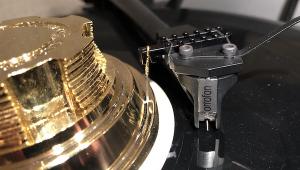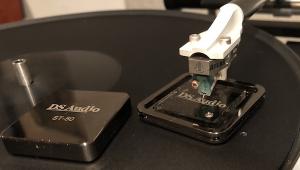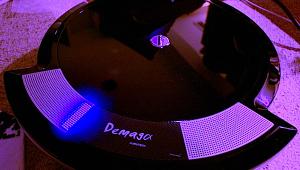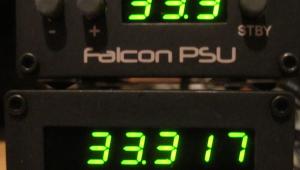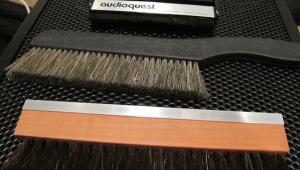Say Hello to My "Little Fwend" Automatic Tone Arm Lifter

The only time it can actually be bad for your cartridge is if you are playing an older, '50s era LP with a "violent" lead out groove designed to trip a clunky old record changer. Those records can give your cartridge a nasty workout that can include, in rare instances, time spent on the paper label and then back into the modulated groove area, though if you've ever experienced that, it's usually as effective a wake-up call as an alarm clock.
In a review of Sota's Moonbeam turntable, we covered the inexpensive QUP automatic arm lifter. It's an undamped, lightweight $50 plastic device that works reasonably well and is certainly appropriate to use in a moderately priced rig but if you've got thousands invested in a cartridge you might consider the $249 "Little Fwend" made in Scandinavia.
This is beautifully machined item available in three sizes (two are in the distribution chain, one as special order directly from Little Fwend. Despite the available variety there's no guarantee one will fit on your turntable, mostly because of distance between platter and arm base. For that reason Little Fwend offers an online list of known compatible turntables.
The lift cylinder is smooth-operating and well-damped, which results in a gentle rise, free of bouncing or "violent upheavals" as the arm rises, regarding of its mass or tracking force. Little Fwend provides excellent set-up instructions and includes both magnetic and adhesive ways to fix the base to your turntable.
The Little Fwend is packaged and presented as thoughtfully as it is manufactured. In the embedded video you will see a situation where it just barely fits between the under review EAT B Sharp turntable's platter and arm base. You'll also see that the rubber topped lifter contacts a screw instead of the arm itself. Not a problem but the point is, compatibility should be considered before you purchase one. Another issue in this particular install is that the "antenna" that the arm contacts is very close to the platter, which makes putting the record on the platter a bit tricky.
In this situation adding a Little Fwend may not be worth the inconvenience, but that of course is your choice. Where the Little Fwend is more compatible, it's a well worthwhile accessory especially if you are prone to dozing off before a record ends! As you'll see in the video, the Little Fwend is a smooth operator. If you own a premium rig, you'll appreciate the machine and plating quality too.
In America Little Fwend is available from Music Direct and perhaps from others as well. It's an easy product to recommend for its thoughtful packaging, excellent instructions, high quality construction and especially for how gently and reliably it does its job.




